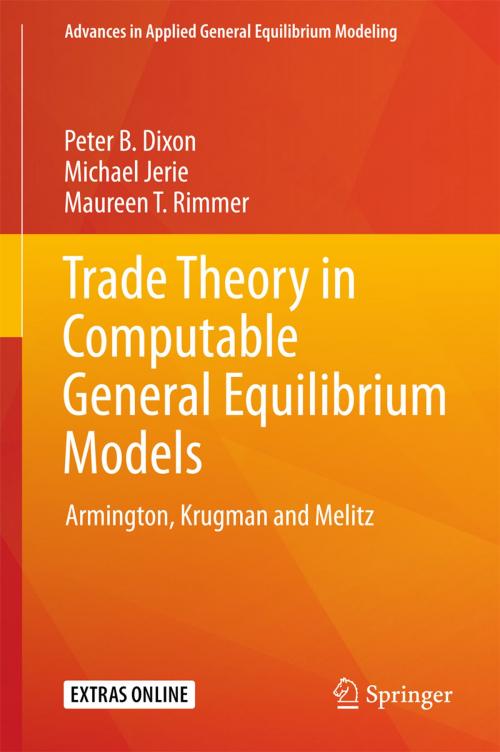Trade Theory in Computable General Equilibrium Models
Armington, Krugman and Melitz
Business & Finance, Economics, International Economics, Theory of Economics| Author: | Peter B. Dixon, Michael Jerie, Maureen T. Rimmer | ISBN: | 9789811083259 |
| Publisher: | Springer Singapore | Publication: | March 30, 2018 |
| Imprint: | Springer | Language: | English |
| Author: | Peter B. Dixon, Michael Jerie, Maureen T. Rimmer |
| ISBN: | 9789811083259 |
| Publisher: | Springer Singapore |
| Publication: | March 30, 2018 |
| Imprint: | Springer |
| Language: | English |
This book is for people who want to understand modern trade theory, particularly the Melitz model. It lays out Melitz theory from first principles and relates it to earlier theories of Armington and Krugman. For trade theory specialists, the book produces some significant conclusions. It identifies conditions under which Krugman and Melitz models produce essentially the same results for the welfare effects of trade liberalization as those obtained from Armington, and conditions under which this is not true. These findings will be of interest to academics and policy advisors who need to understand critiques of Armington by proponents of Krugman and Melitz.
For computable general equilibrium (CGE) modelers, the book shows how Melitz-style CGE models can be calibrated, solved and interpreted. A major practical contribution of the book is to show how large-scale Armington models such as GTAP can be converted to Melitz by the addition of a small number of equations and minimal alteration of the original Armington model.
The book describes computational experience in solving Melitz CGE models using GEMPACK software. This experience will be of interest to researchers currently attempting to solve Melitz-based CGE models. Almost all previous Melitz studies have used GAMS software. Authors of these studies have reported computational difficulties. These difficulties did not occur in this book’s GEMPACK-based computations.
The book concludes that: (a) CGE modelers can embrace Melitz while retaining their Armington-based models as powerful interpretive devices; and (b) via GEMPACK, large-scale CGE models incorporating Melitz specifications can be solved with no more difficulty than similar-dimensioned Armington models.
This book is for people who want to understand modern trade theory, particularly the Melitz model. It lays out Melitz theory from first principles and relates it to earlier theories of Armington and Krugman. For trade theory specialists, the book produces some significant conclusions. It identifies conditions under which Krugman and Melitz models produce essentially the same results for the welfare effects of trade liberalization as those obtained from Armington, and conditions under which this is not true. These findings will be of interest to academics and policy advisors who need to understand critiques of Armington by proponents of Krugman and Melitz.
For computable general equilibrium (CGE) modelers, the book shows how Melitz-style CGE models can be calibrated, solved and interpreted. A major practical contribution of the book is to show how large-scale Armington models such as GTAP can be converted to Melitz by the addition of a small number of equations and minimal alteration of the original Armington model.
The book describes computational experience in solving Melitz CGE models using GEMPACK software. This experience will be of interest to researchers currently attempting to solve Melitz-based CGE models. Almost all previous Melitz studies have used GAMS software. Authors of these studies have reported computational difficulties. These difficulties did not occur in this book’s GEMPACK-based computations.
The book concludes that: (a) CGE modelers can embrace Melitz while retaining their Armington-based models as powerful interpretive devices; and (b) via GEMPACK, large-scale CGE models incorporating Melitz specifications can be solved with no more difficulty than similar-dimensioned Armington models.















